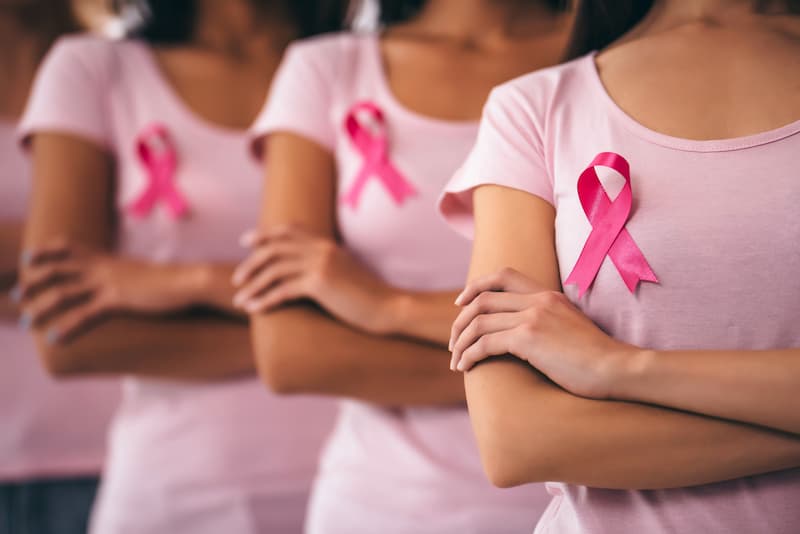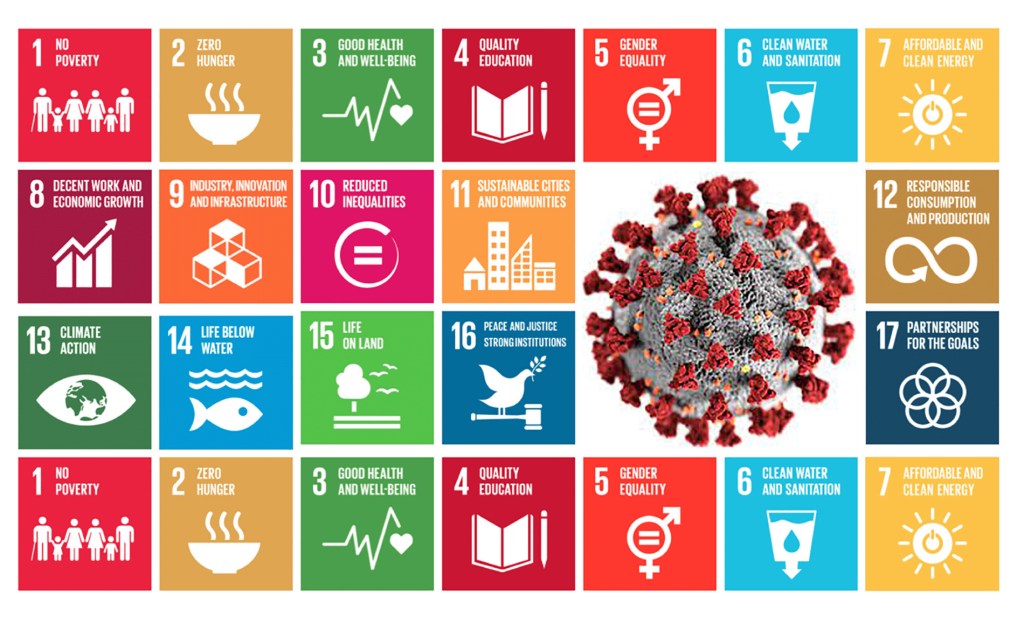Data Show Growing Trend in Insurance/Racial OS Disparities in Breast Cancer – CancerNetwork

Report on Widening Disparities in Breast Cancer Survival and Implications for Sustainable Development Goals
Executive Summary: Alignment with Global Goals
A study led by the American Cancer Society (ACS) reveals a significant widening of survival disparities among breast cancer patients in the United States based on health insurance status and race. These findings present a substantial challenge to the achievement of key Sustainable Development Goals (SDGs), particularly SDG 3 (Good Health and Well-being) and SDG 10 (Reduced Inequalities). The increasing gap in survival outcomes underscores systemic failures in providing equitable healthcare access, directly contravening the principles of universal health coverage and equal opportunity.
Analysis of Disparities by Health Insurance Status
The study highlights a growing survival gap linked to health insurance coverage, which impedes progress towards SDG 3, Target 3.8: Achieve universal health coverage. Compared to White women (ages 18-64) with private insurance, survival rates for other groups have worsened over time.
- Patients with Medicaid: The hazard ratio (HR) for survival increased from 2.68 in 2014-2018 to 3.09 in 2019-2023.
- Uninsured Patients: The HR for survival increased from 3.09 in 2014-2018 to 4.79 in 2019-2023.
This trend indicates that lack of adequate insurance is an increasingly significant barrier to positive health outcomes, moving away from the goal of ensuring financial risk protection and access to quality essential health-care services for all.
Analysis of Disparities by Race
Persistent and worsening racial disparities undermine SDG 10, Target 10.3: Ensure equal opportunity and reduce inequalities of outcome. Even among those with private insurance, a significant survival gap exists and is growing.
- Compared to White women with private insurance, the HR for survival among non-Hispanic Black women with private insurance increased from 1.79 in 2014-2018 to 1.93 in 2019-2023.
- This marks a reversal of previous progress, as the HR had decreased from 2.01 in the 2004-2008 period.
The Intersection of Race and Insurance: A Compounded Challenge to SDGs
The most severe disparities emerge at the intersection of race and insurance status, demonstrating a critical failure to uphold the foundational SDG principle of “leaving no one behind.” The survival outcomes for non-Hispanic Black women without private insurance are starkly lower than for privately insured White women and have worsened significantly.
- Non-Hispanic Black Women with Medicaid: The HR for survival increased from 3.63 in 2014-2018 to 4.49 in 2019-2023.
- Uninsured Non-Hispanic Black Women: The HR for survival increased from 6.43 in 2014-2018 to 6.90 in 2019-2023.
These compounded disadvantages represent a profound inequality that directly challenges the successful implementation of both SDG 3 and SDG 10.
Study Methodology and Demographic Context
The research utilized data from the National Cancer Database (NCDB) for women aged 18 to 64 diagnosed with breast cancer between 2004 and 2023. The primary outcome was 5-year overall survival.
- Age at Diagnosis: A greater proportion of Black patients (42.1% with private insurance, 47.6% with Medicaid) were diagnosed under the age of 50 compared to White patients (36.3% with private insurance, 41.9% with Medicaid).
- Comorbidities: Black women presented with two or more comorbidities at higher rates across all insurance categories compared to White women.
Conclusion and Policy Recommendations for SDG Advancement
The study concludes that survival disparities by health insurance and race have widened, particularly in recent years. The investigators, including Jingxuan Zhao, PhD, state that these trends highlight systemic inequities. To align with the 2030 Agenda for Sustainable Development, targeted policy interventions are essential. Policies aimed at expanding health insurance coverage and providing financial assistance are critical levers for achieving SDG 3 (Good Health and Well-being) and SDG 10 (Reduced Inequalities) by improving equitable survival and ensuring that advancements in cancer treatment benefit all segments of the population.
Analysis of SDGs, Targets, and Indicators in the Article
1. Which SDGs are addressed or connected to the issues highlighted in the article?
- SDG 3: Good Health and Well-being: The article’s central theme is health, specifically focusing on survival rates for breast cancer, a non-communicable disease. It directly addresses health outcomes and disparities in medical care.
- SDG 10: Reduced Inequalities: The core of the study is the analysis of widening disparities in breast cancer survival based on race (non-Hispanic Black vs. White women) and economic status (as indicated by health insurance type: private, Medicaid, or uninsured). This directly relates to inequality within a country.
2. What specific targets under those SDGs can be identified based on the article’s content?
- Target 3.4: “By 2030, reduce by one-third premature mortality from non-communicable diseases through prevention and treatment…” The article discusses mortality from breast cancer, a non-communicable disease, and highlights that survival rates (and thus mortality) are worsening for certain groups, indicating a move away from this target for those populations. The study’s primary outcome was “5-year OS [Overall Survival], defined as the date of diagnosis to date of death,” which is a direct measure related to premature mortality.
- Target 3.8: “Achieve universal health coverage, including financial risk protection, access to quality essential health-care services…” The article demonstrates failures in achieving equitable health coverage by showing significant differences in survival based on insurance status. The higher hazard ratios for survival among patients with Medicaid or no insurance compared to those with private insurance point to a lack of access to quality, life-saving healthcare for all.
- Target 10.2: “By 2030, empower and promote the social, economic and political inclusion of all, irrespective of… race, ethnicity… or economic or other status.” The article explicitly shows that non-Hispanic Black women and women with lower economic status (uninsured or on Medicaid) face significantly worse health outcomes, indicating a lack of inclusion in the benefits of healthcare advancements.
- Target 10.3: “Ensure equal opportunity and reduce inequalities of outcome…” The widening gap in survival rates is a clear example of an inequality of outcome. The article notes that “survival disparities by health insurance and race among women newly diagnosed with breast cancer widened over time,” directly contradicting the goal of this target.
3. Are there any indicators mentioned or implied in the article that can be used to measure progress towards the identified targets?
- Mortality/Survival Rates from a specific non-communicable disease: The article’s primary outcome is the “5-year OS” (Overall Survival) for breast cancer. This serves as a direct indicator for measuring progress on Target 3.4. The data is disaggregated by race and insurance status.
- Hazard Ratios (HR) for Survival: The study uses Hazard Ratios as a specific statistical measure to quantify the disparities in survival among different groups. For example, the HR for survival among uninsured women was 4.79 compared to White women with private insurance. This HR is a precise indicator of the inequality of outcome (Target 10.3) and the gaps in health coverage (Target 3.8).
- Health Insurance Coverage Status: The article categorizes the study population by their insurance status (“private,” “Medicaid,” and “uninsured”). The proportion of the population in each category and their associated health outcomes serve as an indicator of the effectiveness and equity of health coverage systems, relevant to Target 3.8.
- Health outcomes disaggregated by race and economic status: The entire study is based on comparing survival rates between “non-Hispanic Black women” and “White women,” and by their insurance status. This disaggregated data is a crucial indicator for monitoring inequalities as per Targets 10.2 and 10.3.
SDGs, Targets, and Indicators Table
| SDGs | Targets | Indicators |
|---|---|---|
| SDG 3: Good Health and Well-being | 3.4: Reduce premature mortality from non-communicable diseases.
3.8: Achieve universal health coverage and access to quality essential health-care services. |
– 5-year Overall Survival (OS) rate for breast cancer. – Mortality rates from breast cancer, disaggregated by race and insurance status. – Health insurance coverage status (private, Medicaid, uninsured) as a proxy for access to care. |
| SDG 10: Reduced Inequalities | 10.2: Promote inclusion of all, irrespective of race or economic status.
10.3: Ensure equal opportunity and reduce inequalities of outcome. |
– Hazard Ratios (HR) for survival, comparing different racial and economic groups. – Disparities in survival rates between non-Hispanic Black women and White women. – Disparities in survival rates based on health insurance status. |
Source: cancernetwork.com
What is Your Reaction?
 Like
0
Like
0
 Dislike
0
Dislike
0
 Love
0
Love
0
 Funny
0
Funny
0
 Angry
0
Angry
0
 Sad
0
Sad
0
 Wow
0
Wow
0















































/environment-climate-change-and-health-(ech)/water-sanitation-hygiene-and-health-(wsh)/landfill-tuvalu-36092.tmb-1200v.jpg?sfvrsn=5c21fe40_1#)


.jpg.webp?itok=0ZsAnae9#)

























